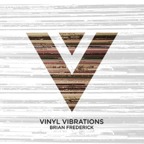Skip to content

Vinyl Vibrations is a music education podcast. I started in 2010. Episodes focus on great musicians found in my vinyl record collection, with records as old as 1950. In each episode, I explore elements of the artist’s music that makes their work unique and timeless. Episodes range in length from 40 to 75 minutes. I do not have a set release schedule. You can find my shows wherever you get your podcasts.
Vinyl Vibrations – Podcast Episodes
Jazz Fusion – 2 episodes
Symphonic Rock – 2 episodes
Solo Artist Albums
Odd Meters
Larry Coryell
Parts Harmonious
Rock the Classics
Jazz Fusion
Charlie Christian
Django Reinhardt – 2 episodes
Fats Waller – 2 episodes
Wes Montgomery – 2 episodes
Jeff Beck – 2 episodes
Dave Brubeck
John McLaughlin
Herb Alpert & The Tijuana Brass
Stephane Grappelli
Wendy Carlos
Stephen Stills
Pat Metheny
Stevie Wonder
Fats Waller – more!
